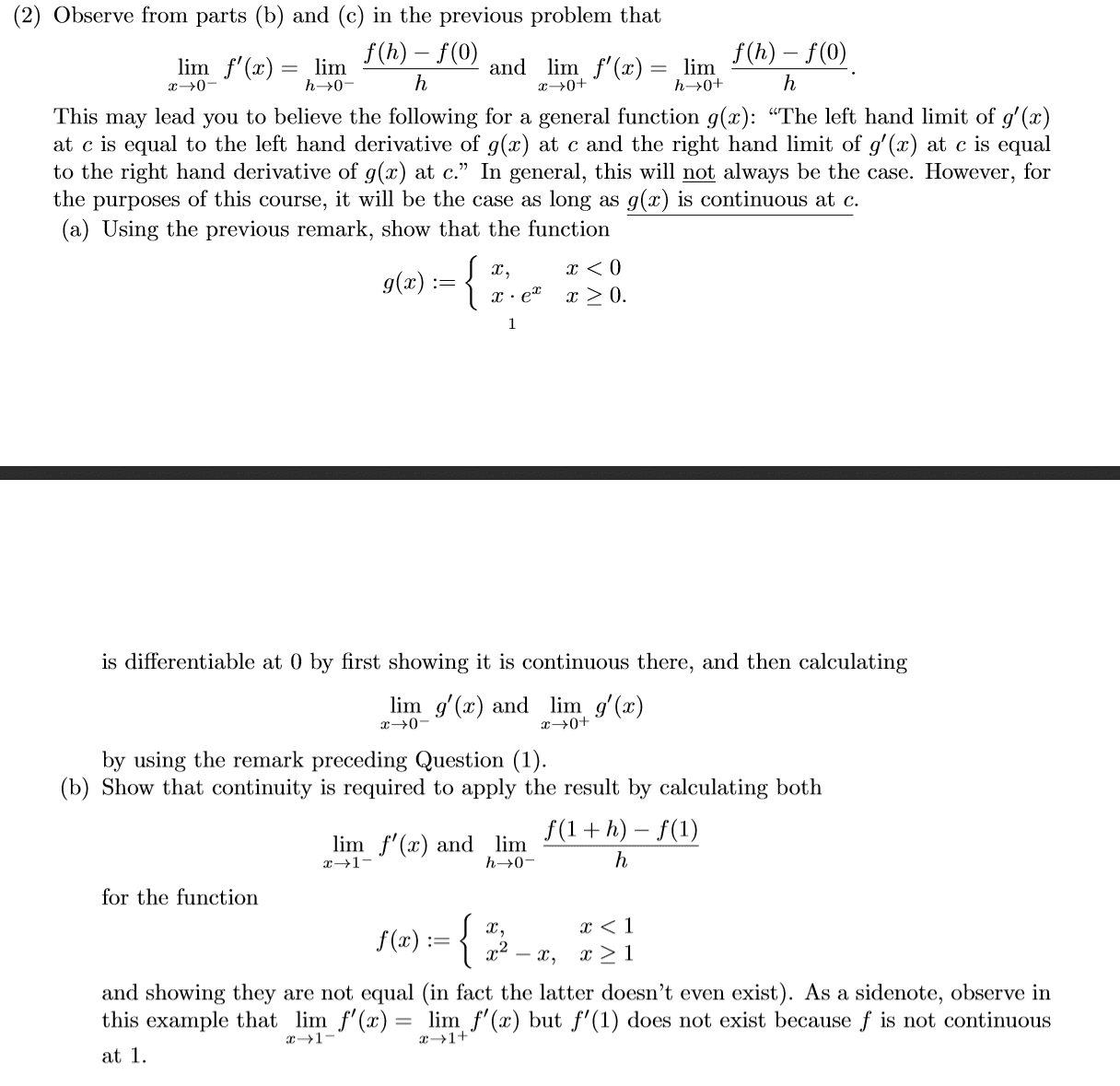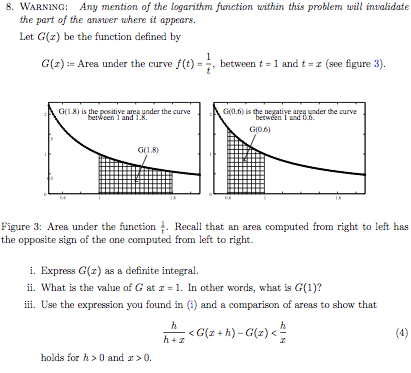MATH1115 Lecture 5: Limit of a function, Limit Laws and Continuity

MATH1115: Limit of a function, Limit Laws and Continuity
● Limit of a Function:
○ Suppose that f is a real-valued function defined on an interval which
includes a, expect that f might not be defined at a itself.
○ Then we say that the limit of f(x) as x approaches a equals L, and write lim
x->a f(x) = L, if the value L can be approximated as precisely as desired
using f(x), simply by requiring that x is sufficiently close to a without
equalling a [how close this is can depend on the level of precision
required]
○ Can talk about the limit as x -> a- f(x) from the left and ignore the
behaviour on the right hand side and x-> a+ f(x) from the right and ignore
the behaviour on the left hand side and see limiting behavior
● Limit Laws:
○ Assuming that lim x-> a f(x) = L and lim x-> a g(x) = M
■ Lim x->a [f(x) + g(x)] = L + M
■ Lim x->a [f(x) - g(x)] = L - M
● Proof: by i. Lim x->a (-g(x)) = -M , lim x->a [f(x)-g(x)] = lim x-
>a [f(x) + g(x)] = L + -M = L - M
■ Lim x->a [cf(x)] = cL
■ Lim x-> [f(x)g(x)] = LM
■ If M doesn’t = 0 then lim x->a [f(x)/g(x)] = L/M
■ If nEN, then lim x->a [f(x)]n = Ln
■ Lim x->a c=c
● C is not dependant on X
■ Lim x->a x=a
■ Lim x-> a xn=an
● Special case of Law 6 applied to Law 8
■ If nEN, then lim x->a nsqrt(x) = nsqrt(a)
● If n is even we assume a>0
■ If nEN, then lim x->a nsqrt(f(x)) = nsqrt(L)
● More general case of Law 10
● If n is even we assume L > 0
○ E.g. Lim x->0 (sqrt(1+x) -1)/x thus we are not allowed to use the limit law
of 5 aka L/M rule
■ F’(0) where f(x) = sqrt (1+x)
■ Lim h->0 (sqrt (1+h) - 1)/h
■ Lim h->0 [f(0+h) - f(0)]/h <- first principle
■ Lim x->0 [(sqrt(1+x)-1)(sqrt(1+x)+1)] / x(sqrt(1+x)+1)
■ Lim x-> 0 1+x-1/x(sqrt(x+1) + 1)
find more resources at oneclass.com
find more resources at oneclass.com
Document Summary
Math1115: limit of a function, limit laws and continuity. Suppose that f is a real-valued function defined on an interval which includes a, expect that f might not be defined at a itself. Assuming that lim x-> a f(x) = l and lim x-> a g(x) = m. Lim x->a [f(x) + g(x)] = l + m. Lim x->a [f(x) - g(x)] = l - m. Proof: by i. lim x->a (-g(x)) = -m , lim x->a [f(x)-g(x)] = lim x- >a [f(x) + g(x)] = l + -m = l - m. If m doesn"t = 0 then lim x->a [f(x)/g(x)] = l/m. If nen, then lim x->a [f(x)]n = ln. Special case of law 6 applied to law 8. If nen, then lim x->a nsqrt(x) = nsqrt(a) If nen, then lim x->a nsqrt(f(x)) = nsqrt(l) If n is even we assume l > 0.








